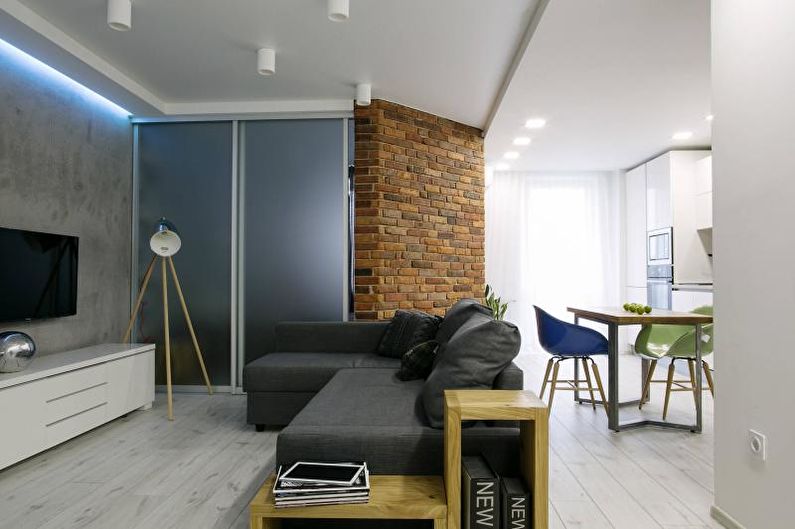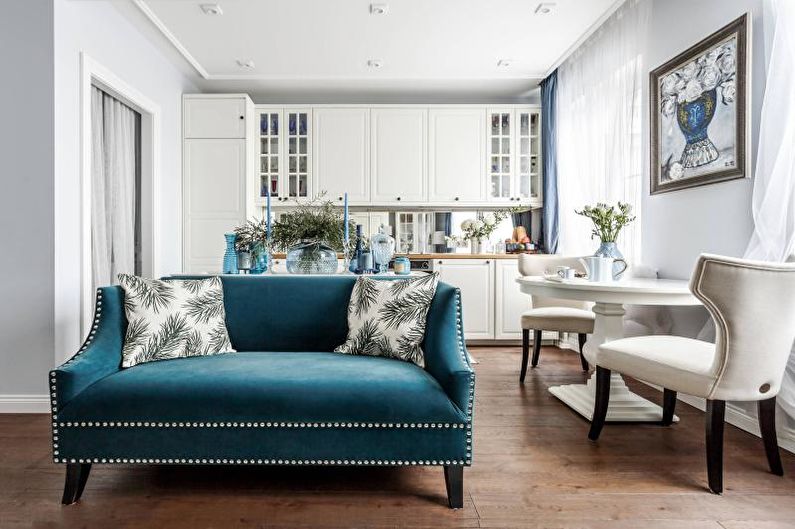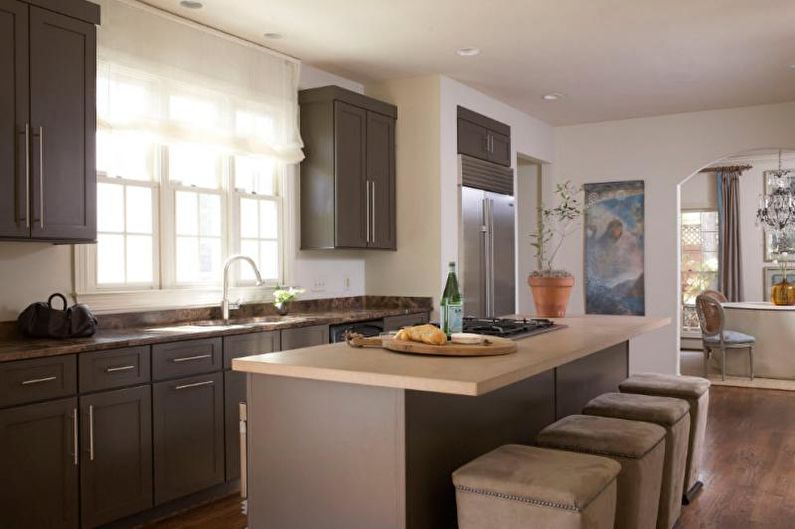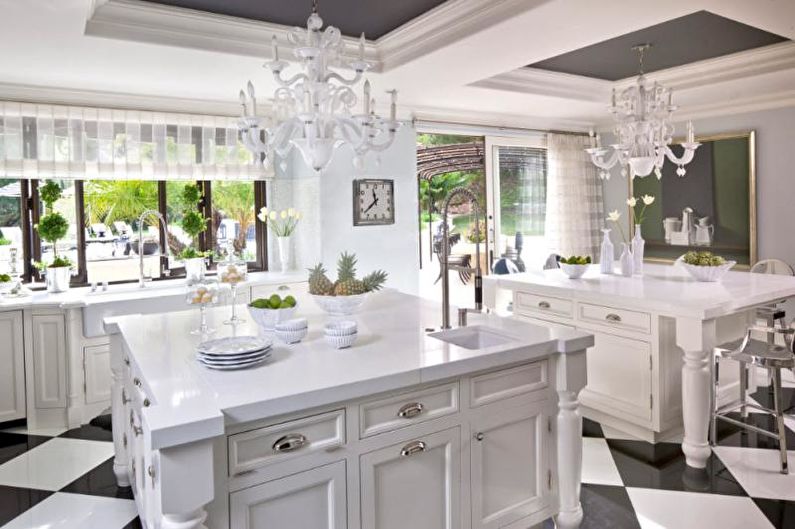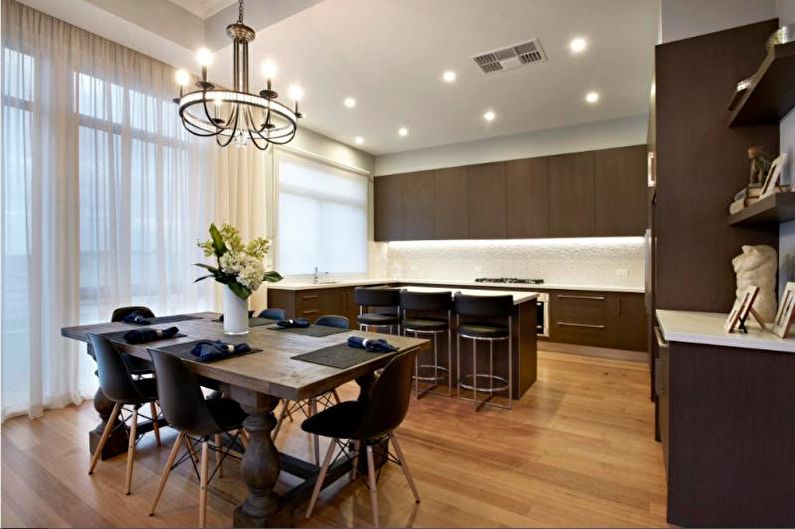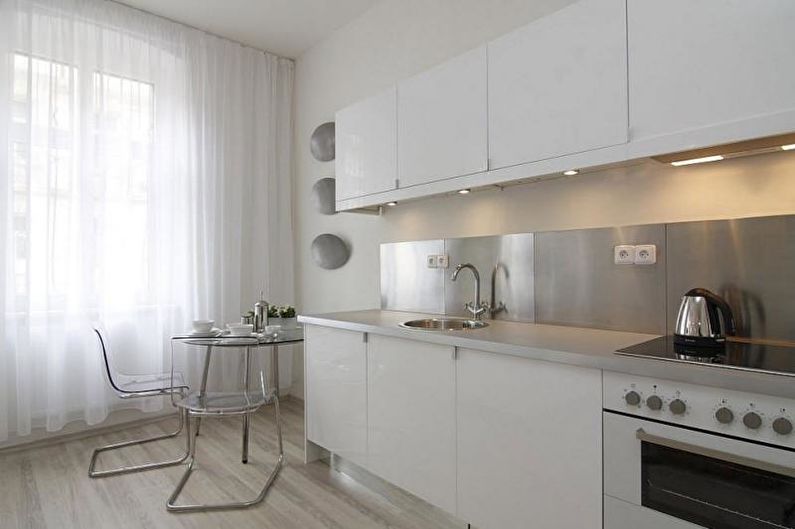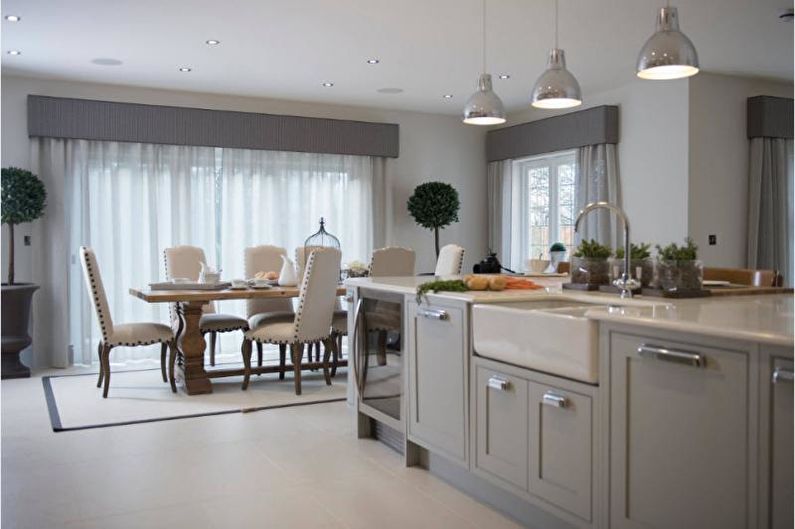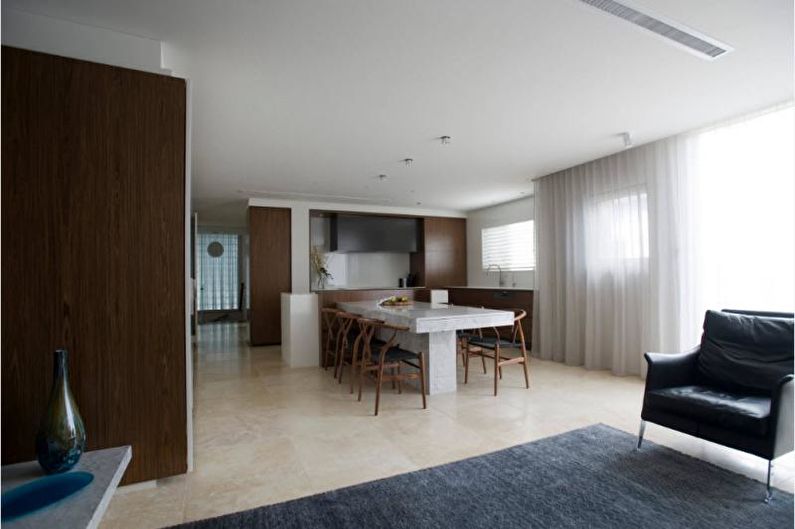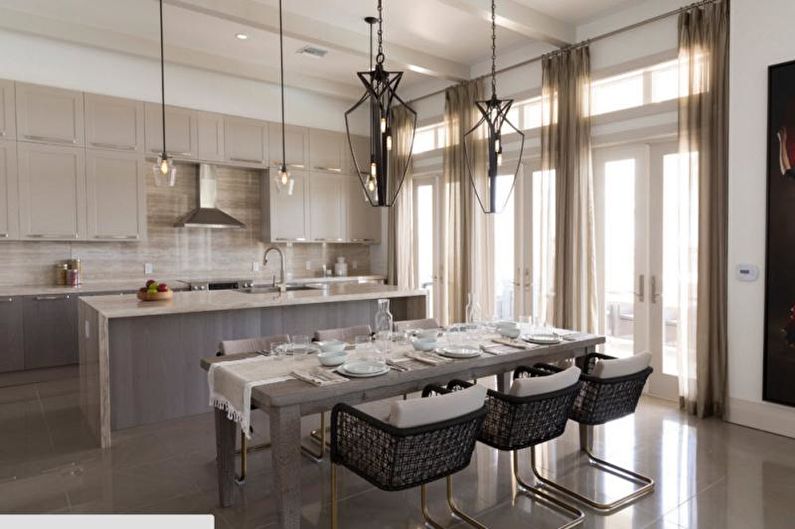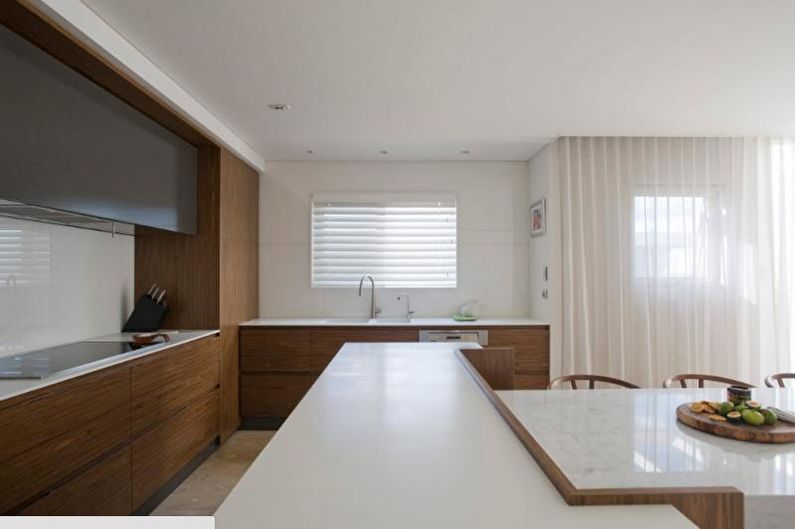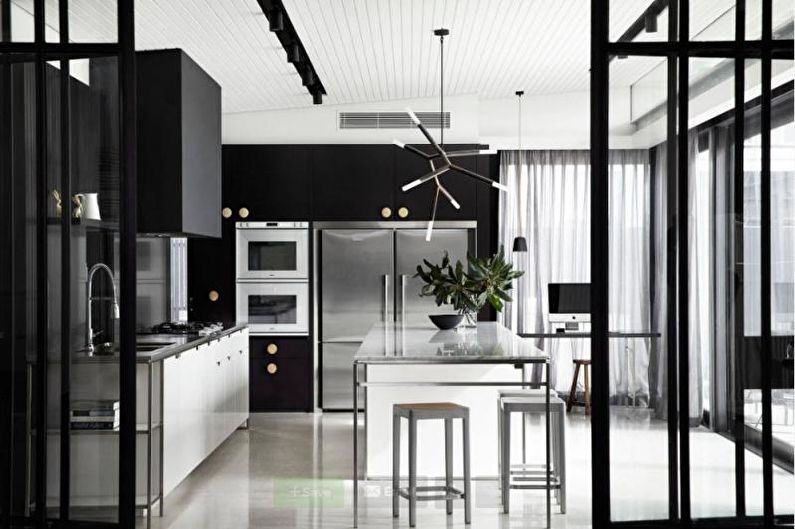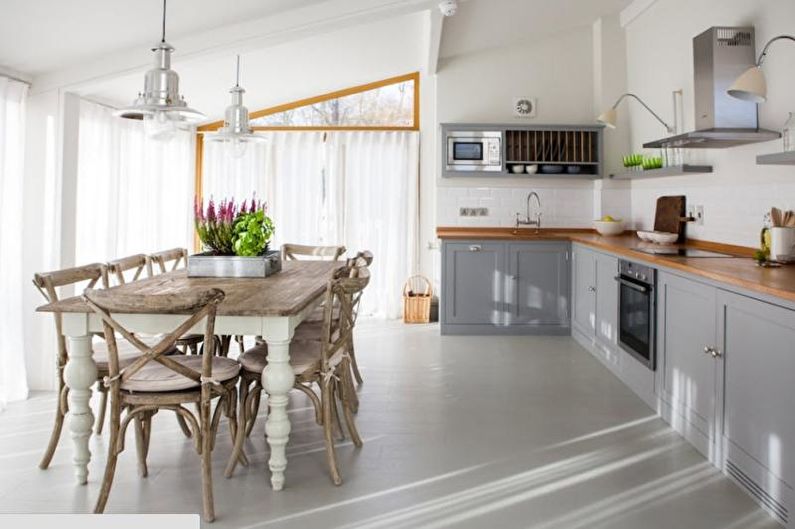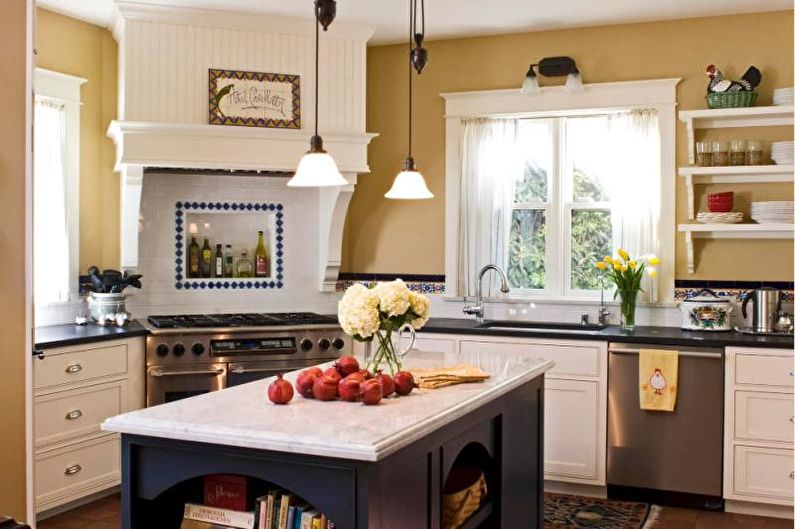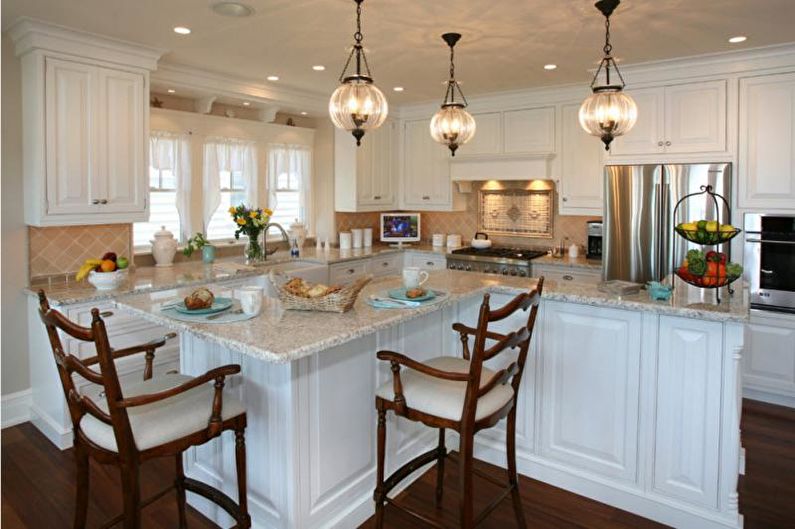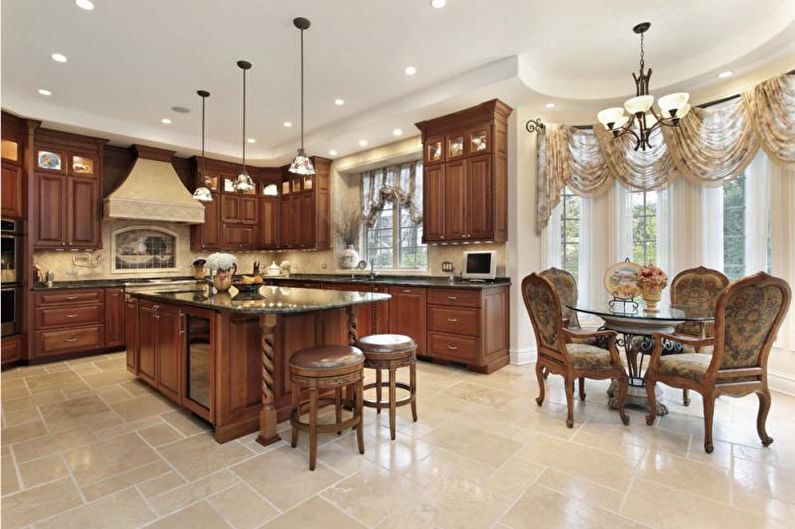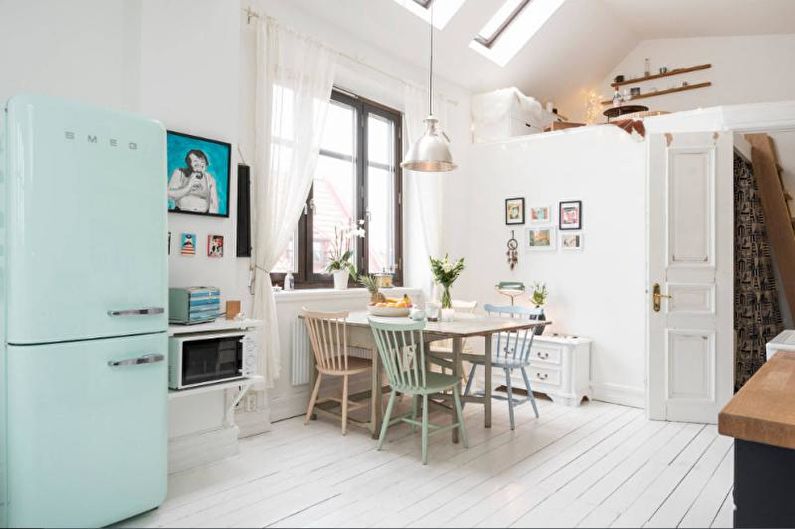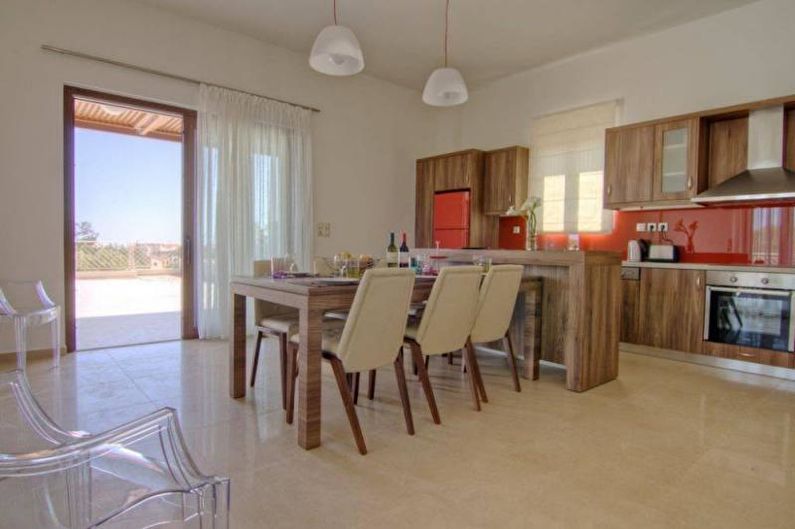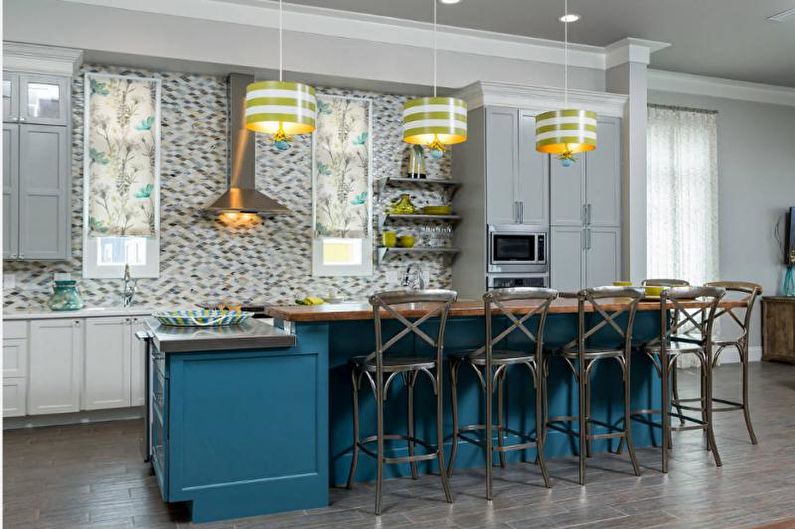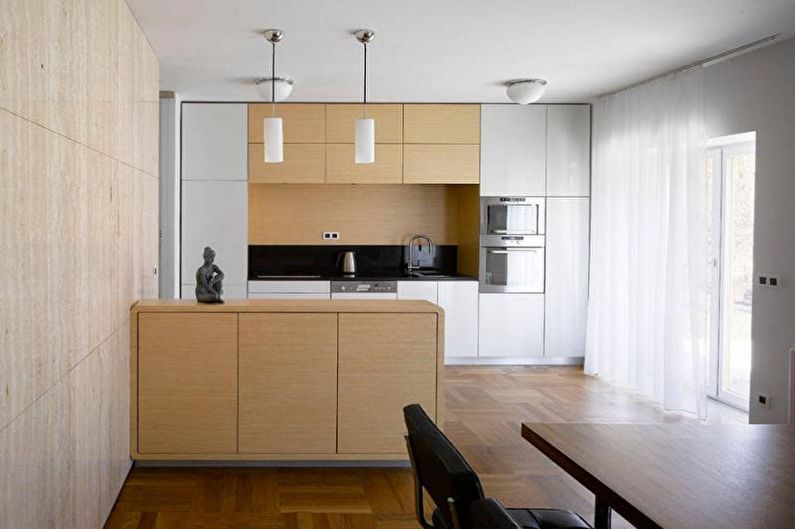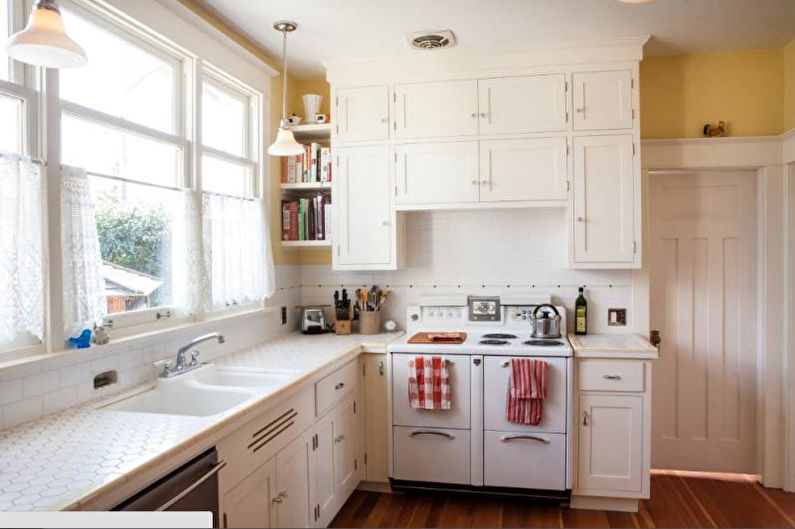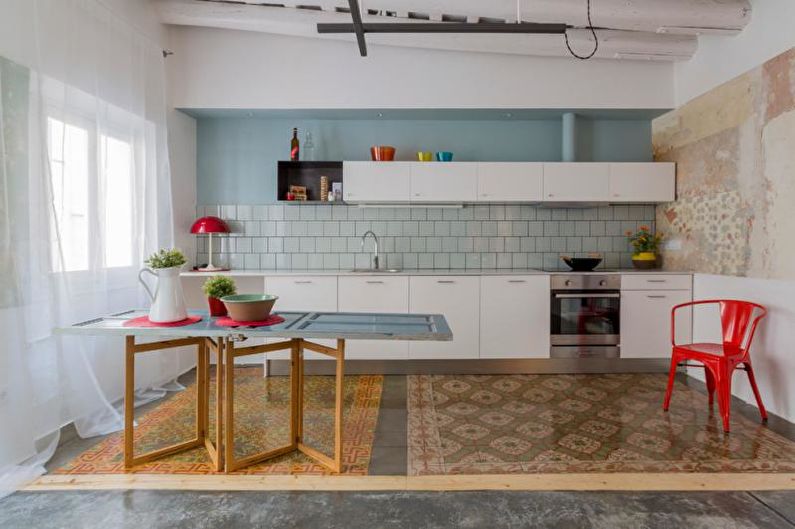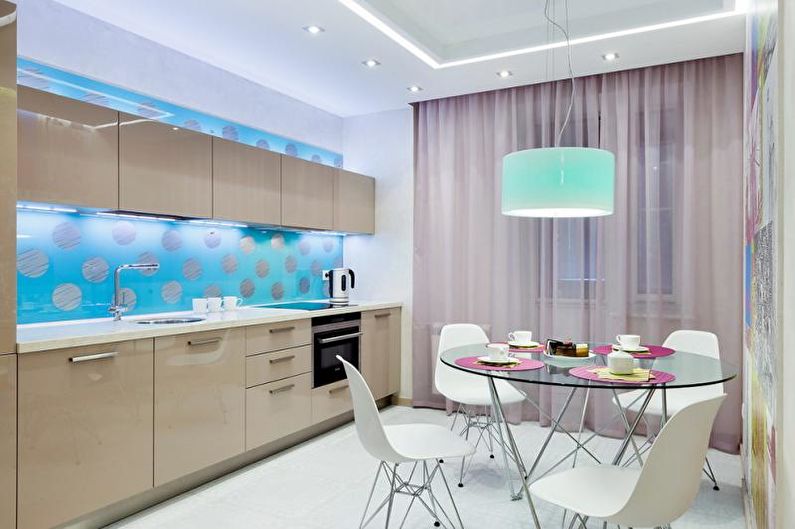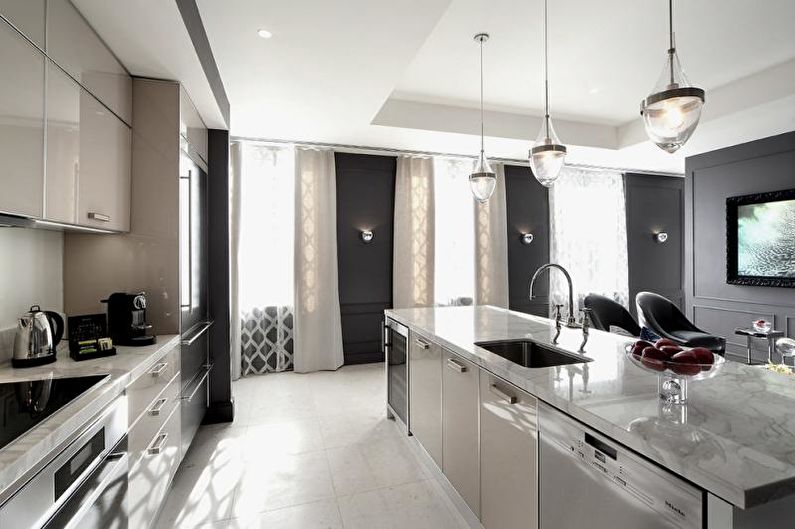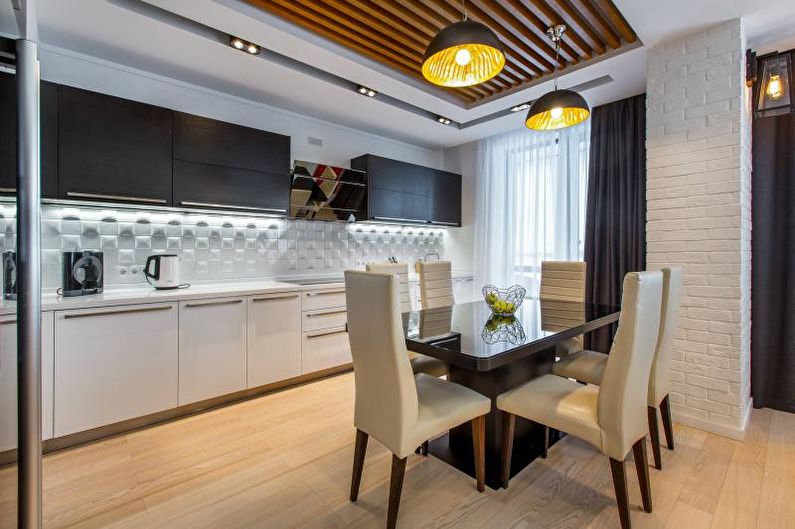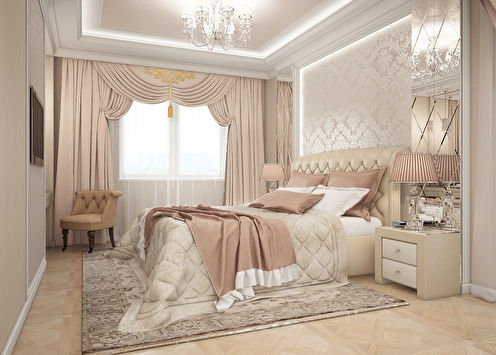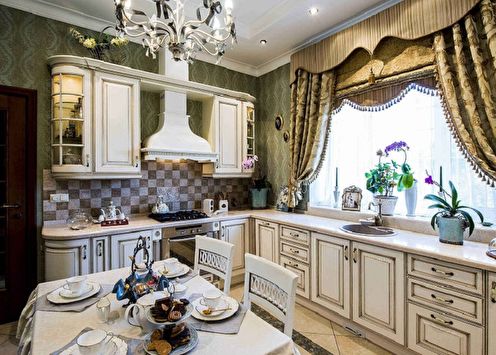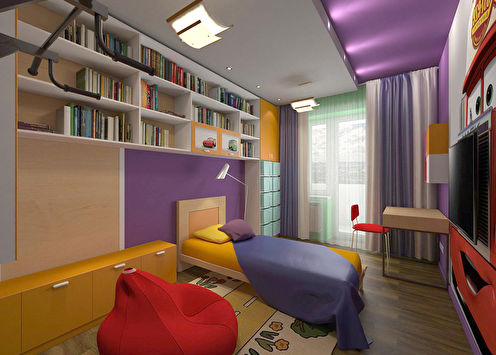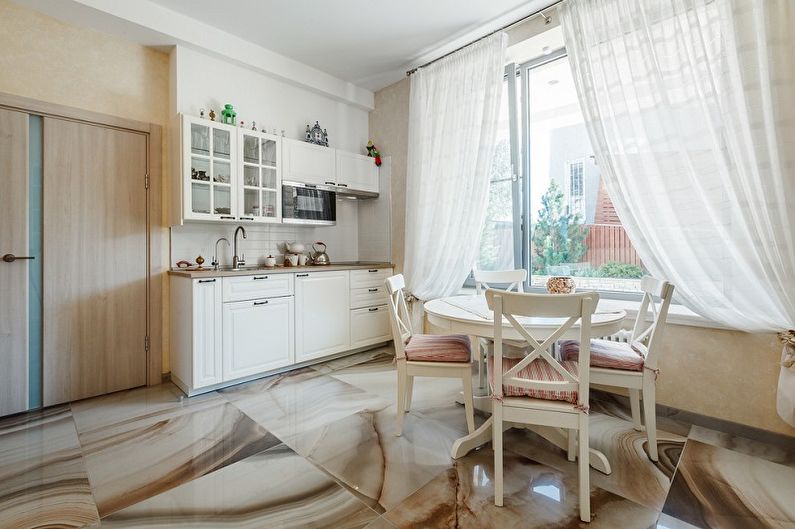
Properly selected tulle will serve as a beautiful completion of the image of the kitchen. Perhaps you believe that in the modern interior he is unlikely to find a place, but this is not so. If you take into account the features of the room, the color palette of design, correctly select the necessary fabric, then you will certainly be impressed by the transformed look of the kitchen space.
The subtleties of choosing tulle in the kitchen
As a rule, it is not so difficult to make a choice in favor of this or that tulle. However, sometimes this process causes a number of difficulties associated with the characteristics of the room - the degree of its illumination, size, style, etc.
Curtains and tulle are selected based on the following parameters: compatibility with other interior details; degree of transparency, allowing the transmission of light rays; ease of care; durability; fabric texture.
In addition to the expectation that the tulle will bring a touch of airiness, freshness and lightness to the atmosphere of the room, its practical functions remain important - zoning the space, the ability to hide errors in decoration and skipping daylight.
A classic tulle in bright colors will organically fit into the traditional interior. For a modern, minimalist style, it makes sense to abandon the tulle or choose the most neutral option, possibly in a non-trivial dark color. Scandinavian design requires maximum light input, so it is better not to use tulle at all, but to give preference to Roman curtains. Country style, Provence - this is the case when the tulle will be appropriate. Options with floral patterns, sometimes even with drapery - make a choice, starting from the design of the room.
Sometimes it’s very difficult to choose a quality canvas that meets the specified parameters, and in this case it is worth considering the option of tailoring to order or with your own hands. Next, we will consider in detail all the nuances of choosing the right textile in accordance with the above parameters.
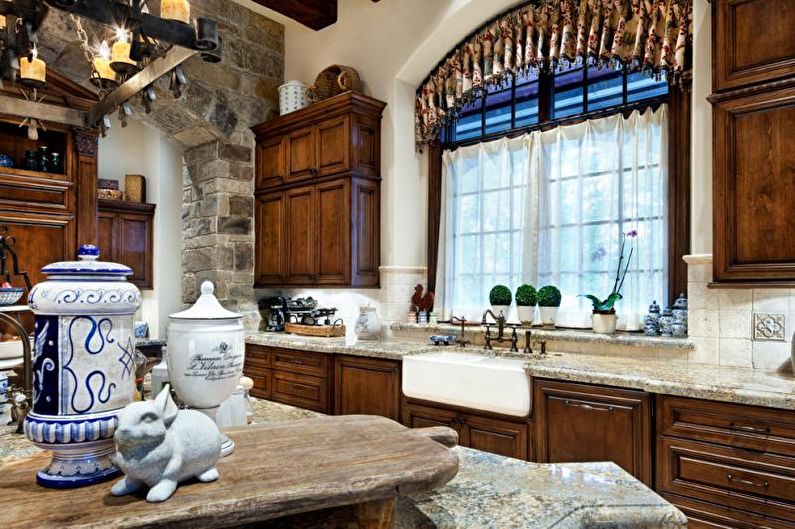
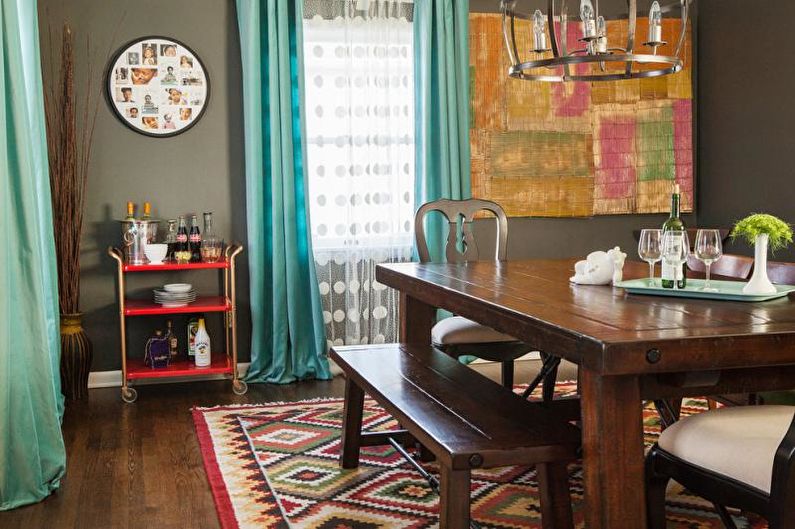
The length and configuration of the tulle in the kitchen
In the kitchen room there is the possibility of using various tulles, not limited by the characteristic features of this room, because this space also serves as a living room, where you can gather in a circle of friends for long conversations and feasts.
The classic long tulle design, familiar to most living quarters, is not so often used in the kitchen. However, provided that the window openings are located at a considerable distance from the sink, oven and stove, you can hang such curtains here. Thus, airiness and lightness can be added to the design.
If the space does not have sufficient footage, then it is logical to opt for tulle to the windowsill. This length is optimal, based on considerations of cleaning and maintenance, as well as the possibility of placing flowers or other elements of decor and everyday life on the window sill.
An arch-shaped tulle is not so popular today and does not correspond to modern aesthetic ideas. But just such a product is perfect for small windows that overlook the sunny side - in this case, textiles will provide good daylight. By the way, if you decorate a room in a country style, you can safely pick up just such a tulle.
It’s worthwhile to refuse complex drapes, décor, and lambrequins for any decoration. Such sophistication does not exactly make the interior, especially the small kitchen, stylish and harmonious. Try to be guided by the correct rule: "less, but better."
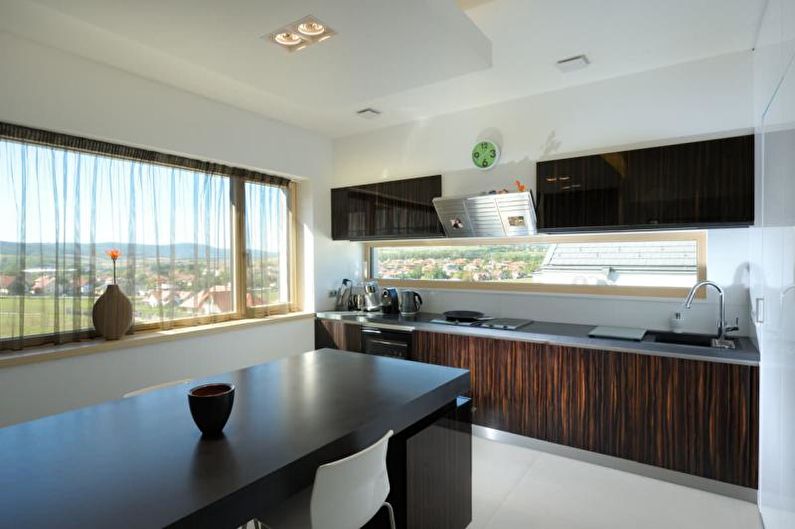
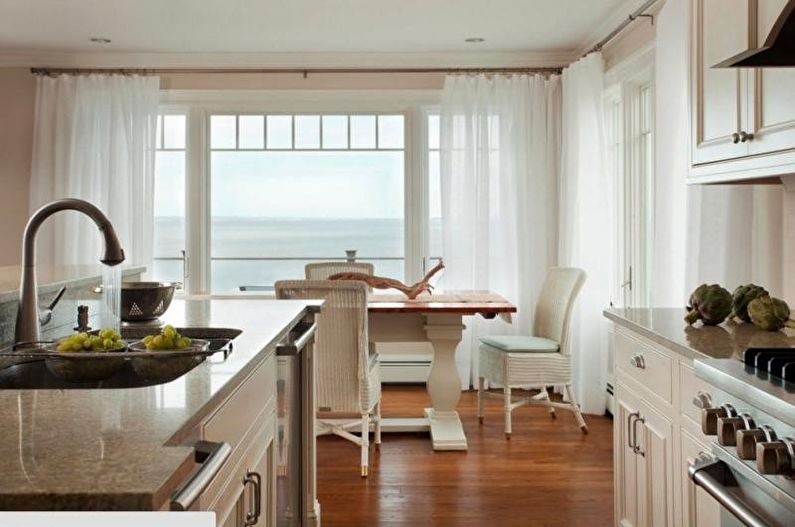
Fabric for tulle in the kitchen
The appearance and quality indicators of tulle are largely determined by the material from which it is made. As a rule, the product is sewn from the following types of textiles:
Jacquard is a rather expensive item with an ornament. Ornate patterns on a translucent fabric are woven on a special jacquard loom. The design of window openings with such a product is suitable for the classic style.
Kiseya is a translucent, lightweight textile that is made from silk, linen or cotton, although synthetic raw materials have also often been used recently.
Veil is an airy and lightweight material. It is made of cotton, wool, silk. Such a tulle will last a long time, it will let air through, the sun's rays and will not accumulate dust.
The mesh fabric assumes a texture with holes. Textiles contribute to good air circulation, and also does not interfere with the flow of daylight. Manufacturers offer a wide selection of colors and textures, which allows you to choose the most optimal solution. The grid is beautifully arranged with curtains, however, it is exposed to dust settling, and therefore it is not recommended for people prone to allergic reactions.
Organza is a synthetic product made from polyester. Like most others, the canvas is incredibly light and airy, but does not allow enough air to pass through. But it has other advantages - organza is easy to wash, dry quickly, it does not wrinkle and does not accumulate dust.
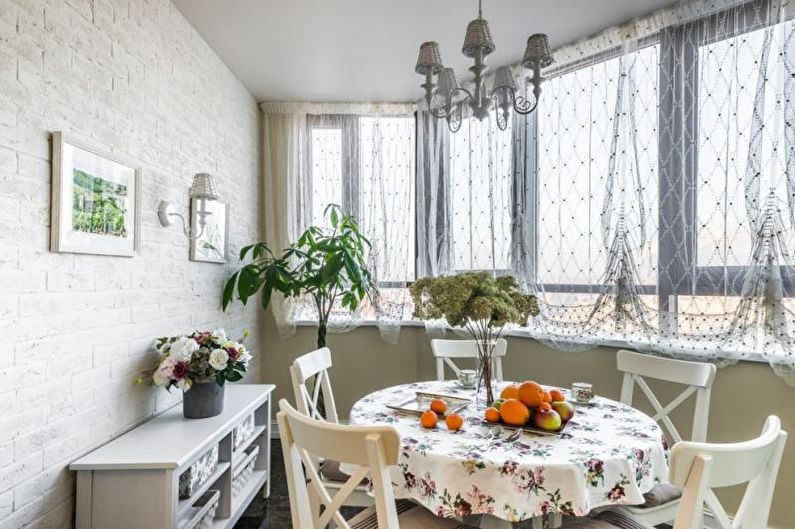
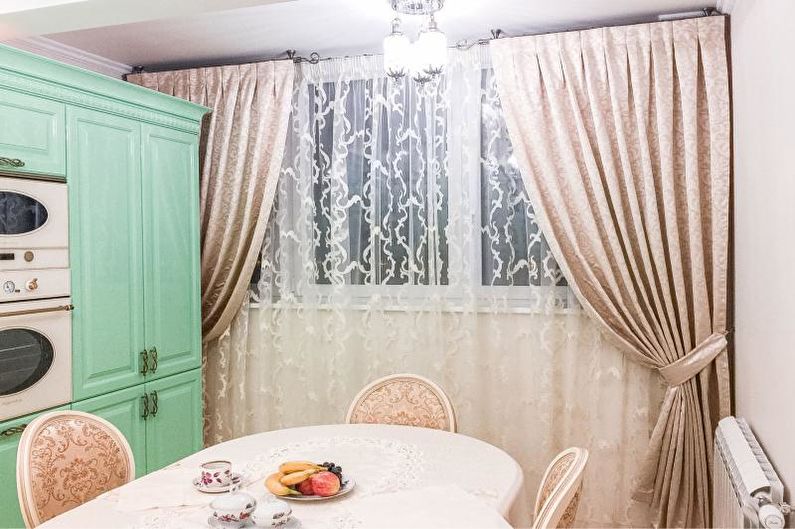
The color palette of tulle in the kitchen
The shade of curtains and tulle for the kitchen, first of all, will depend on the color scheme of the entire space. An important criterion is the amount of incoming sunlight.
White tulle in the kitchen
The white palette is a universal and most harmonious solution for almost every interior. It is suitable for both large and oversized rooms, as well as for windows that open to any side of the world. Translucent fabric in a snow-white, cream, milk shade will become even more airy and light.
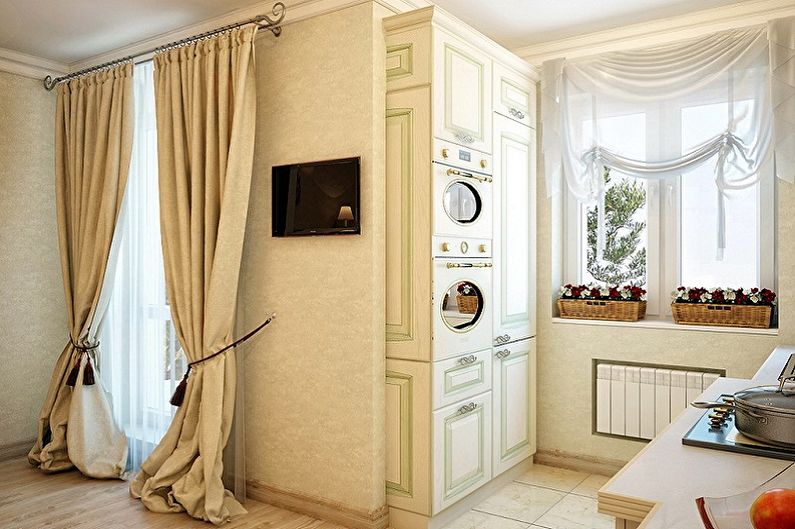
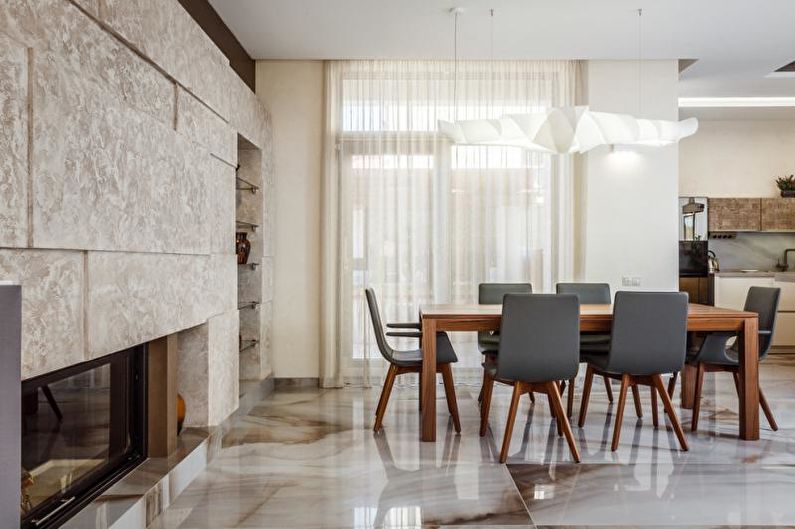
Beige tulle in the kitchen
Gamma beige can be both warm and cold. Which tone to give preference to is up to you. But try to be determined, starting from other paints in decoration and decor, as well as from the intensity of daylight. In the northern and western rooms, it makes sense to bet on warm shades with yellow, orange, peach, brown undertones. For windows facing the south, east side, choose a cold olive beige or beige, gravitating to gray.
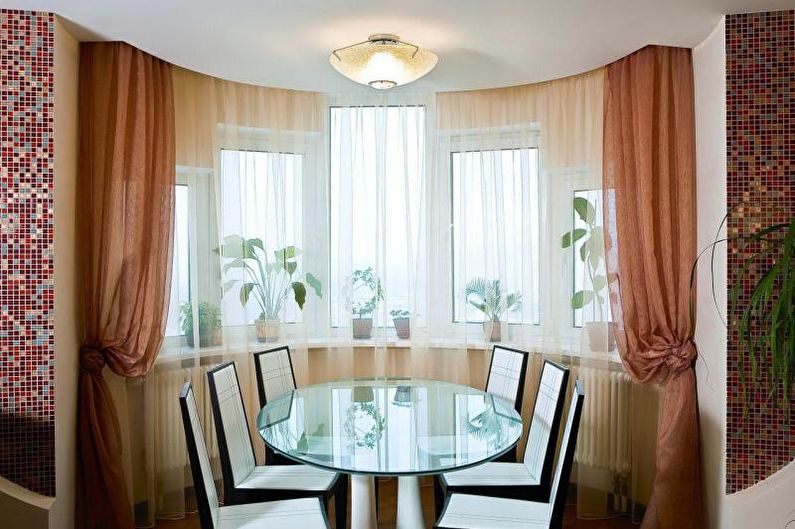
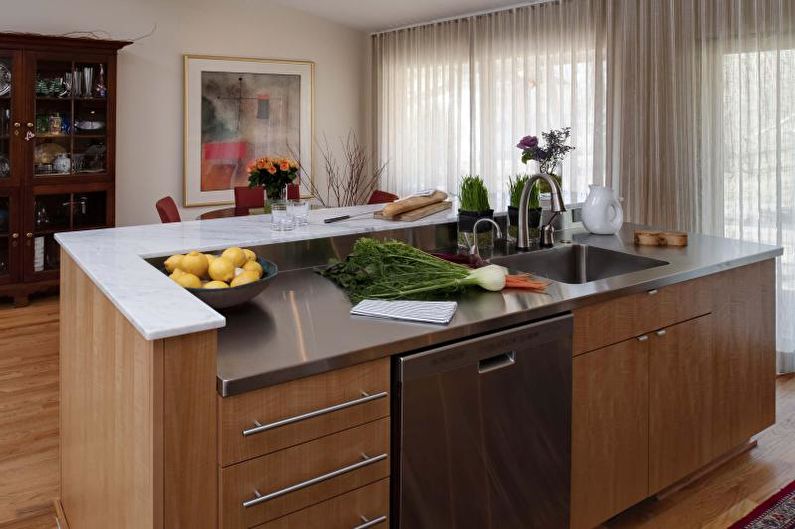
Yellow tulle in the kitchen
The life-affirming, sunny color speaks for itself and hints at its use in rooms with a small stream of light. This is a great option for decorating the kitchen, especially for houses located in the northern latitudes - a gloomy winter morning will be much more pleasant to meet with a cup of coffee in such a rainbow-colored atmosphere.
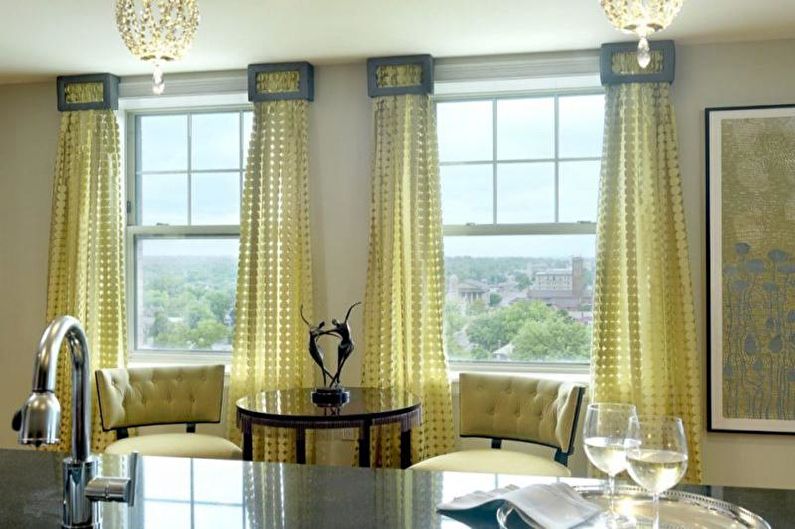
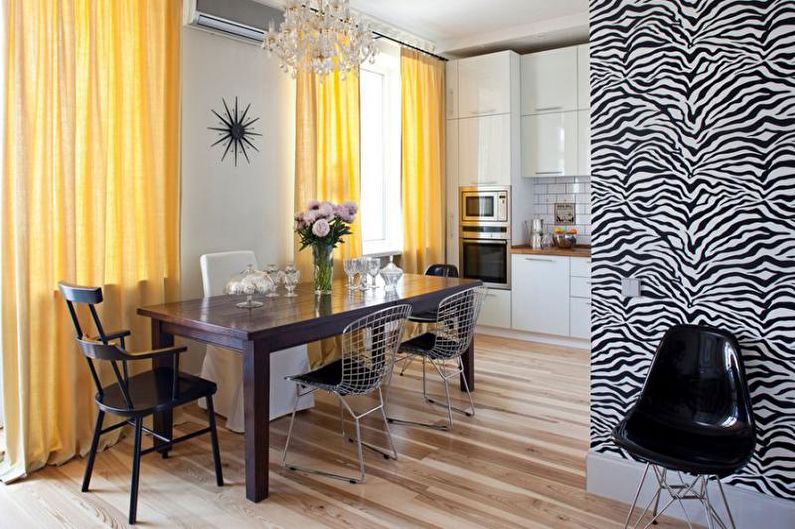
Gray tulle in the kitchen
The gray palette will merge into the concept of modern space, and in some cases into the classic design. This is not the most trivial solution for tulle, but because it is very relevant. For example, a black and white kitchen will look even more vivid and harmonious, if you choose just such a product. Balancing a slightly aggressive contrasting message can always be done with brickwork in terracotta color and wooden elements.
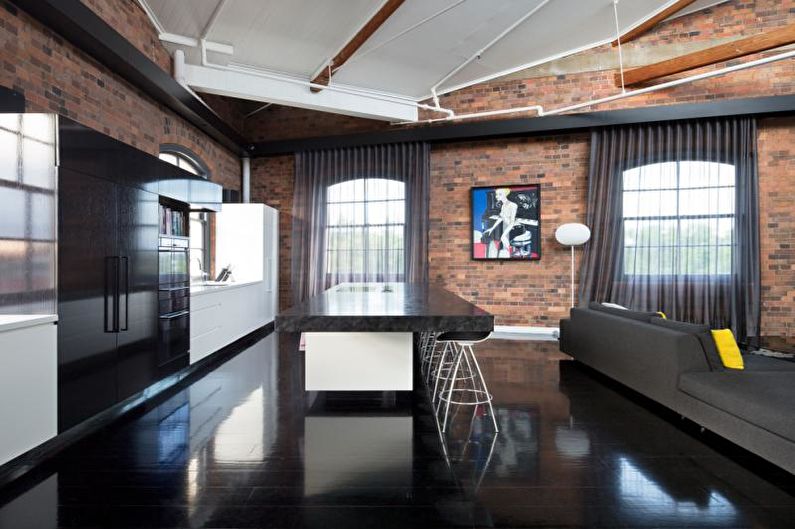
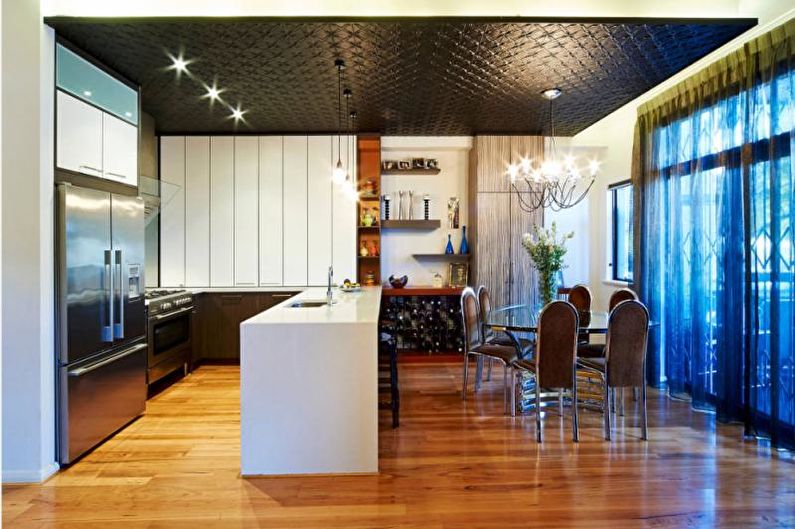
Colored tulle in the kitchen
We talked about standard winning tulle designs. However, sometimes tulle can act as an accent element. For example, a modern kitchen in basic colors will not look so boring if you add it with air curtains with a soft gradation of colors - lemon, lime, light and dark gray. You can support the gamut with bright fruits of the corresponding shade.
Country styles, shabby chic prefer bright colors and original design, so boldly decorate tulle with patterned patches - it will come out very nice.
The space painted in muted tones, complete with dusty pistachio, lilac, pink, blue shades.
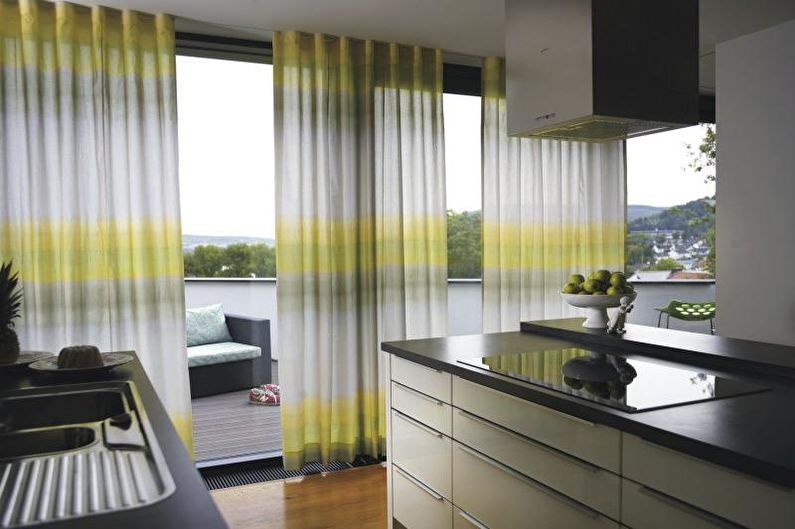
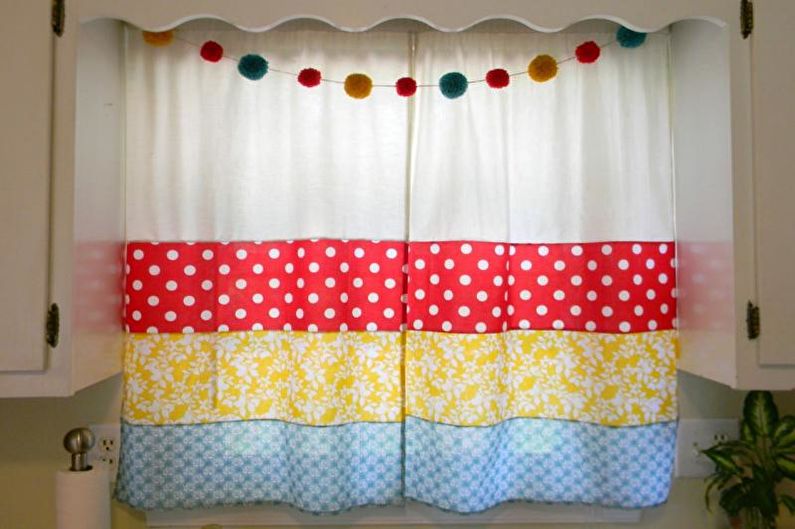
How to sew a tulle with your own hands
As mentioned earlier, sometimes choosing the best option for your kitchen is not as easy as it might seem, and in this case it makes sense to order sewing in the studio or even do it yourself.
So, before starting direct sewing, make a choice in favor of one or another method of fastening to the cornice:
1. Eyelets - are metal or plastic rings that border the borders of the rod holes;
2. Ties fix and decorate textiles; they should be in harmony in shade with tulle and other fabrics in the interior;
3. Wide tapes for curtains are suitable for weighty textiles. The loop can be optionally equipped with buttons or Velcro;
4. The braid must be purchased at a fabric store, this type of fixation will ensure uniform folds.
Next, you need to choose the right fabric and take measurements to determine the size of the canvas. To do this, open the workpiece. Measure the distance from one to the other edge of the cornice, from the ceiling to the windowsill or floor. The optimum width of the canvas is 1.5–2.5 times longer than the cornice, depending on the desired number of folds. Add a few more centimeters (5–7) to produce the binder.
Consider the easiest way to sew tulle:
- Tuck the edges of the fabric 1–2 cm and sew them with a machine. Make sure that the width remains the same in length; for this, pull the textiles slightly during firmware;
- The resulting seams can be embellished with an inlay or satin ribbon in tone of tulle or in a contrasting color, but combined with the rest of the decor;
- Sew the tape to the edge that will be located at the top. If the width of the strip is less than 5 cm, you need to make two lines, and in the case of a larger width, make three lines;
- Pull the tape to the required length, and cut off unnecessary fragments; - Fix the product on the cornice.
If you are not confident in your abilities and are afraid to spoil expensive fabric, contact your nearest atelier.
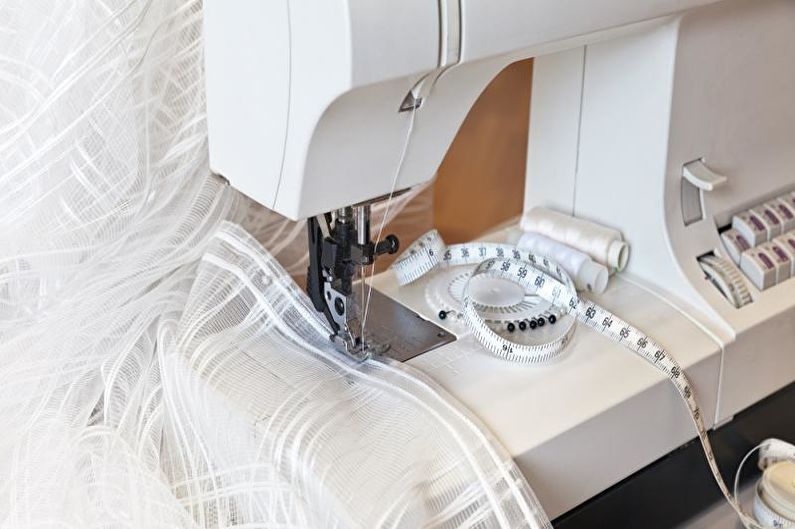
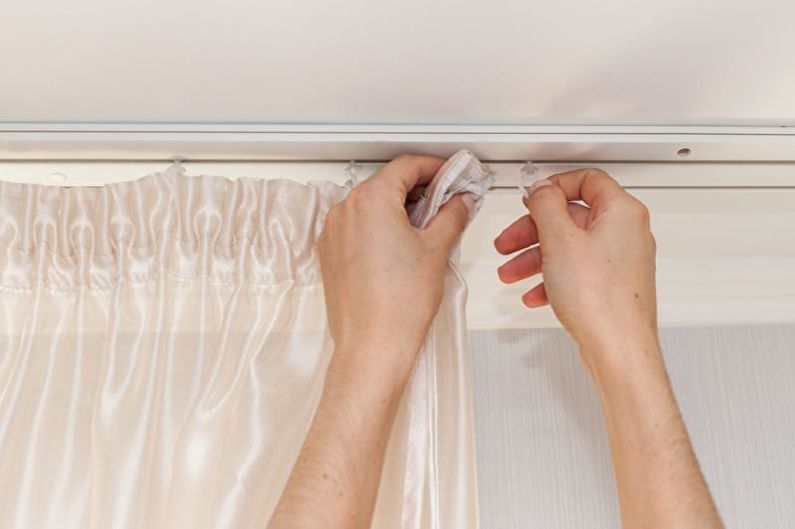
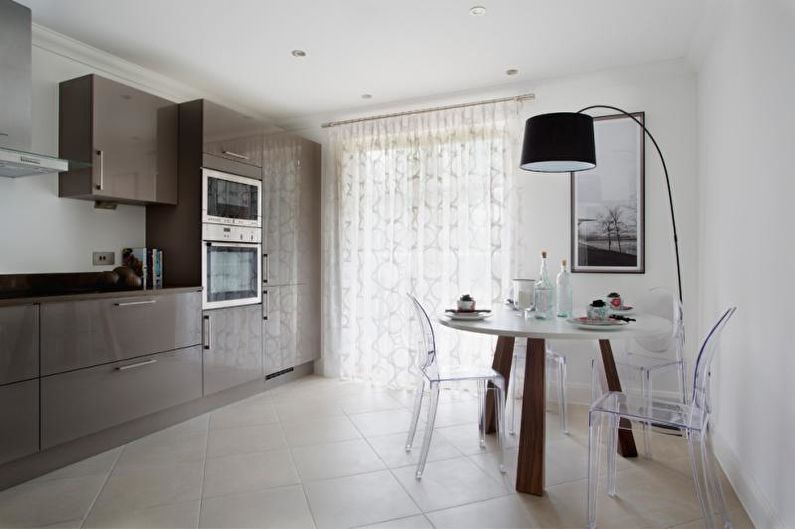
Tulle in the kitchen - photo
We discussed the main nuances of choosing the best tulle option in the kitchen. However, a dry theory is not always enough, it is better to familiarize yourself with ready-made results to imagine which product is right for your room. Therefore, for your inspiration, we offer you to view a selection of photos of embodied design projects of dining rooms and kitchens with air curtain!
